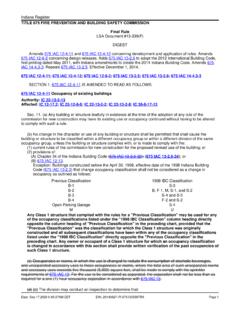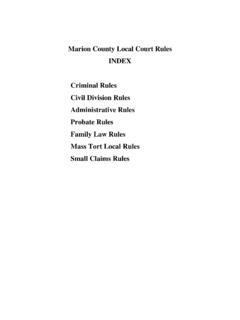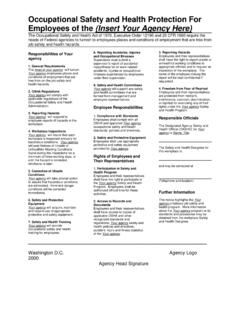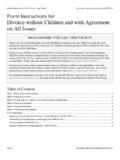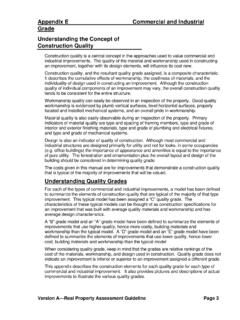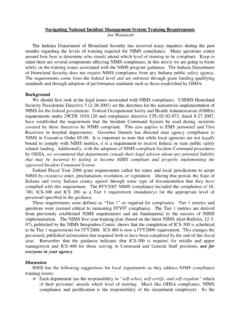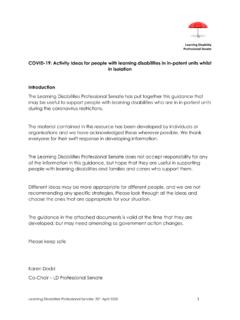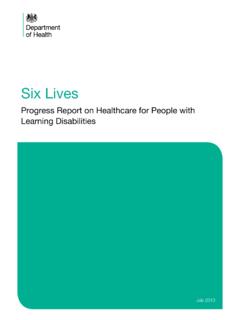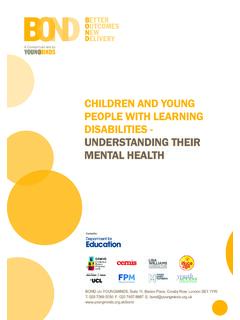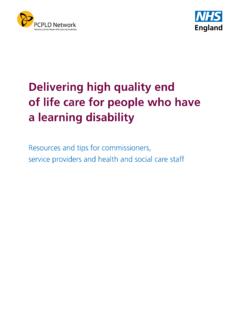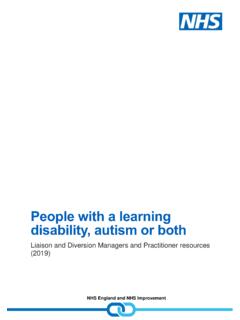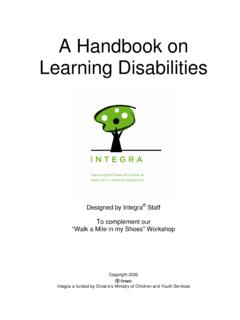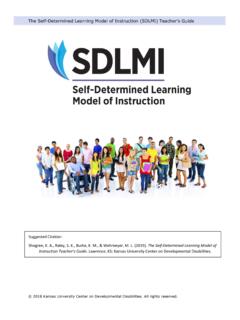Transcription of Myths and Facts About People with Disabilities
1 Myths and Facts About People with Disabilities Myths are roadblocks that interfere with the ability of persons with Disabilities to have equality in employment. These roadblocks usually result from a lack of experience and interaction with persons with Disabilities . This lack of familiarity has nourished negative attitudes concerning employment of persons with Disabilities . It s important to learn the Facts to remove these roadblocks and to stop discrimination. List below are some common Myths and Facts About People with Disabilities . MYTH: Sign language interpreters are required everywhere.
2 FACT: The ADA only requires that effective communication not exclude People with Disabilities , which in many situations means providing written materials or exchanging notes. The law does not require any measure that would cause an undue financial or administrative burden. MYTH: People who are deaf make ideal employees in noisy work environments. FACT: Loud noises of a certain vibratory nature can cause further harm to the auditory system. People who are deaf should be hired for all jobs that they have the skills and talents to perform. No person with a disability should be prejudged regarding employment opportunities.
3 MYTH: All persons with hearing Disabilities can read lips. FACT : Lip-reading skills vary among People who use them and are never entirely reliable. MYTH: People who are blind acquire a "sixth sense." FACT : Although most People who are blind develop their remaining senses more fully, they do not have a "sixth sense." MYTH: Accommodating workers with Disabilities costs too much. FACT: Reasonable accommodation is usually far less expensive than many People think. In most cases, an appropriate reasonable accommodation can be made without difficulty and at little or no cost. A recent study commissioned by Sears indicates that of the 436 reasonable accommodations provided by the company between 1978 and 1992, 69% cost nothing, 28% cost less than $1,000, and only 3% cost more than $1,000.
4 MYTH: The ADA requires extensive renovation of all state and local government buildings to make them accessible. FACT: The ADA requires all government programs, not all government buildings, to be accessible. "Program accessibility" is a very flexible requirement and does not require a local government to do anything that would result in an undue financial or administrative burden. Local governments have been subject to this requirement for many years under the Rehabilitation Act of 1973. Not every building, nor each part of every building needs to be accessible. Structural modifications are required only when there is no alternative available for providing program access.
5 Let's say a town library has an inaccessible second floor. No elevator is needed if it provides "program accessibility" for persons using wheelchairs by having staff retrieve books. MYTH: All People with Disabilities require job accommodations. FACT: Studies have shown that less than one-quarter of employees with Disabilities need accommodations. MYTH: Under the ADA, employers must give People with Disabilities special privileges, known as accommodations. FACT: Reasonable accommodations are intended to ensure that qualified individuals with Disabilities have rights in employment equal not superior to those of individuals without Disabilities .
6 A reasonable accommodation is a modification to a job, work environment or the way work is performed that allows an individual with a disability to apply for a job, perform the essential functions of the job, and enjoy equal access to benefits available to other individuals in the workplace. MYTH: All persons who use wheelchairs are chronically ill or sickly. FACT : The association between wheelchair use and illness may have evolved through hospitals using wheelchairs to transport sick People . A person may use a wheelchair for a variety of reasons, none of which may have anything to do with lingering illness.
7 MYTH: Wheelchair use is confining; People who use wheelchairs are "wheelchair-bound." FACT : A wheelchair, like a bicycle or an automobile, is a personal assistive device that enables someone to get around. MYTH: It is all right for People without Disabilities to park in accessible parking spaces, or use their relatives placard when the relative is not with them. FACT : Because accessible parking spaces are designed and situated to meet the needs of People who have Disabilities , these spaces should only be used by People who need them. MYTH: I can t do anything for someone with mental health needs.
8 FACT: You can do a lot, starting with the way you act and how you speak. You can nurture an environment that builds on People s strengths and promotes good mental health. For example: Avoid labeling People with words like crazy, wacko, loony, or by their diagnosis. Instead of saying someone is a schizophrenic say a person with schizophrenia. Learn the Facts About mental health and share them with others, especially if you hear something that is untrue. Treat People with mental illnesses with respect and dignity, as you would anybody else. Respect the rights of People with mental illnesses and don t discriminate against them when it comes to housing, employment, or education.
9 Like other People with Disabilities , People with mental health needs are protected under Federal and State laws. MYTH: People with mental illnesses are violent and unpredictable. FACT: In reality, the vast majority of People who have mental health needs are no more violent than anyone else. You probably know someone with a mental illness and don t even realize it. MYTH: Mental illnesses cannot affect me. FACT: Mental illnesses are surprisingly common; they affect almost every family in America. Mental illnesses do not discriminate they can affect anyone. MYTH: Mental illness is the same as mental retardation.
10 FACT: The two are distinct disorders. A mental retardation diagnosis is characterized by limitations in intellectual functioning and difficulties with certain daily living skills. In contrast, People with mental illnesses health conditions that cause changes in a person s thinking, mood, and behavior have varied intellectual functioning, just like the general population. MYTH: Mental illnesses are brought on by a weakness of character. FACT: Mental illnesses are a product of the interaction of biological, psychological, and social factors. Research has shown genetic and biological factors are associated with schizophrenia, depression, and alcoholism.

